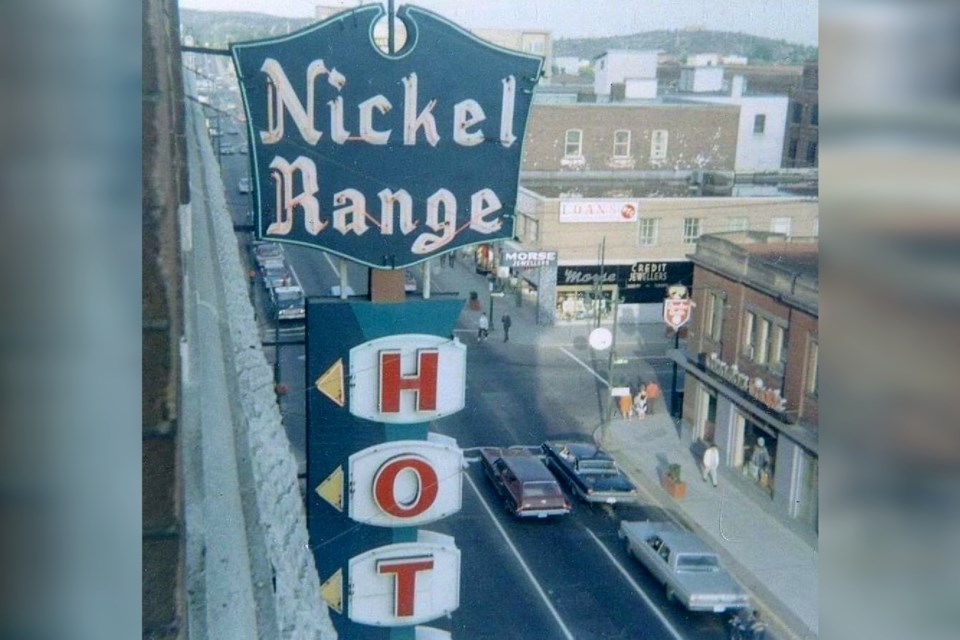It’s a sunny late afternoon and we find ourselves standing at the corner of Mackenzie and Davidson Streets, staring up at the mural of the son of the Nickel Range’s most famous employee. A scant 350 metres south of here was the location of this man’s second home, the kitchen where his father worked feeding the masses: hotel guests, miners, partygoers, service clubs and the local police.
Now, let’s travel back in time and head on down there to take a seat in the Matador Lounge, where our fellow readers will regale us with their memories of that grand old lady of Elm Street, the Nickel Range.
The man in the mural, Alex Trebek, in his memoirs released not long before his unfortunate passing, dedicated an entire chapter to his life at the Nickel Range.
“As I grew up, the kitchen became a second home to me,” he wrote, “where I learned the value of the little things in life: the importance of punctuality; the rewards for hard, honest work; the pride of properly arranging tables and chairs; the camaraderie of a staff of waitresses and food preparers working together in harmony — although there was a time one of the meatcutters, obviously not happy with the way the waitress was placing her order, heaved a meat cleaver at her.”
As mentioned in the previous article, the Nickel Range had its share of famous guests over the years, and two readers added a couple more to that list.
Lily Clarke recalls that David Clayton Thomas, future frontman for the band Blood, Sweat and Tears performed at the Nickel Range. In fact, at the height of his career, he was interviewed on national television about paying his dues. And, as she remembers, “He said his worst time was being attacked with a knife at the Nickel Range in Sudbury.”
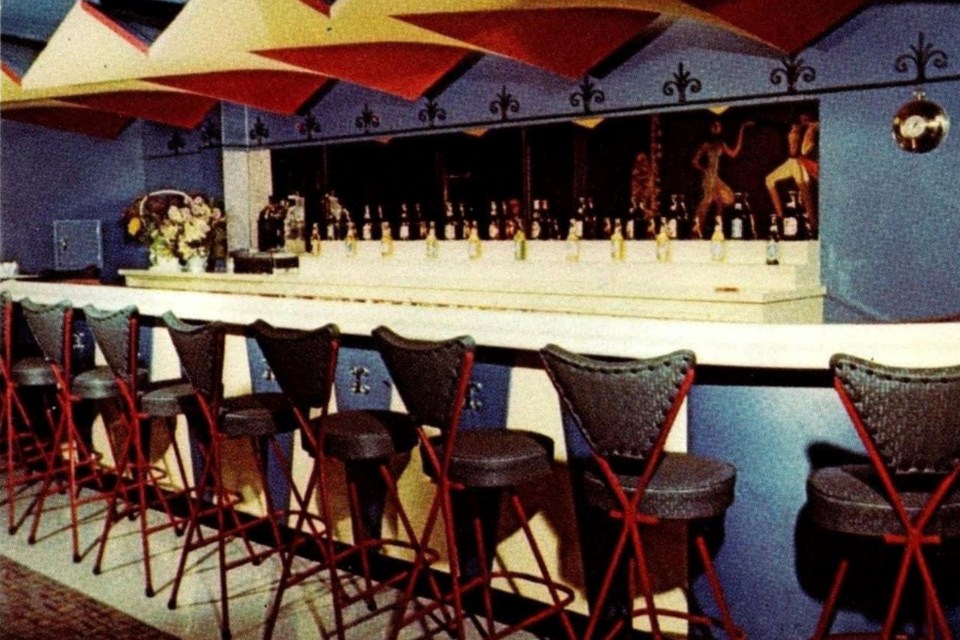
Interestingly, David Clayton Thomas spent his teen years living on the street and in various reformatories, including the Burwash Correctional Centre just south of Sudbury (He said, "Burwash was 30 miles from Sudbury, and a 1,000 miles from nowhere."), doing time as a serial offender for vagrancy, petty theft and street fighting.
Reader Ken Lusk remembers hearing a story of Leslie McFarlane (one of the future writers of the Hardy Boys series of young adult detective novels), who worked as a reporter for The Sudbury Star (the offices of which were in the building next to the Nickel Range) would meet Ernest Hemingway there for drinks, and lots of discussions about his reasons for coming up to Sudbury from Toronto.
He told Hemingway that there was no coal in Sudbury (he was on the hunt for a story about a coal deposit northwest of the city), so there was no story. McFarlane later wrote that Hemingway, who lived at the Nickel Range during his time here, in trying to salvage something from the trip, wrote a piece about Sudbury that accidentally implied it was full of sex workers.
When one thinks of the top places of employment across the city, thoughts immediately turn to the big two, the giants of mining and smelting: INCO and Falconbridge. But, who would have thought, based on our readers comments, that the No. 3 job in town would be working at the Nickel Range.
Let’s take a look at what a day in the life of the hotel and its guests would be like, based on the memories of our readers (apologies for playing loosely with timelines since all of these people didn’t work there at the same time).
While arriving in the late afternoon for a short business trip, our guest would have entered the front doors of the hotel into the expansive lobby suitable for gathering and socializing, being greeted by reader Wayne Moore’s father as he checked you in at the front desk. Then after his room key was handed over, bellhop Rick Bouillon (working his first job in the late 1950s) would gather up our guest’s luggage and escort him up to his room.
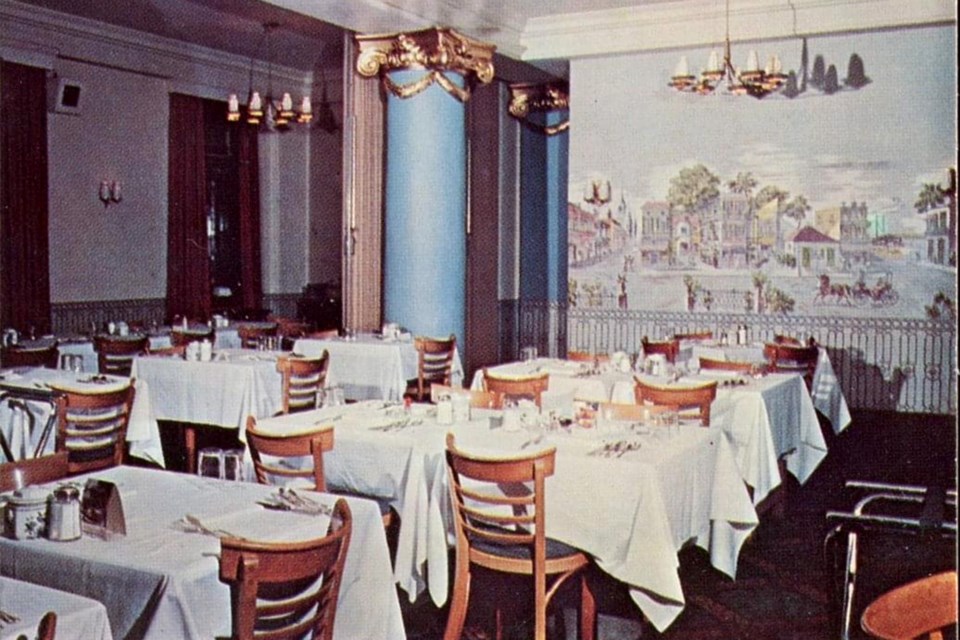
In order to get upstairs to his room on the top floor, our guest would request passage from the hotel’s elevator expert. As Marzio Apolloni wrote in, guests did not control this one since “(his) aunt used to be the elevator operator” there.
Once our guest was settled into their room and required to speak to his local business acquaintance, he would call down to Claude Belanger’s mother-in-law, who was the switch board operator there, to have his phone call transferred to the office on Cedar Street.
Soon enough, the dinner hour arrived, and it was time to head down to the Range’s beautiful dining room for a delicious meal cooked by Alex Trebek’s father (the head chef) and Maritta McLandress’ mother (a short order cook for a brief period of time), which was served by reader Betty Clement’s mother who was the head waitress at the time. (Side note: Betty Clement’s mother also had a side job, “she was his (Trebek’s) babysitter on her days off ... all she would say was that he liked to get into trouble … a lot!”).
The next morning, prior to that important meeting, our guest heads down to the basement where Norm Valiquette plied his trade.
“I was a shoe shine boy … 35 cents for a shoe shine,” he recalled
This would be followed by one last stop for a trim from Paul Huffels’ father, who was a barber at the Nickel Range along with Gene Byers, Frank Morasco and Rocco Polifroni.
After that business meeting was complete and just prior to checking out, our guest stopped by the bar, managed by “Sudbury Then and Now” follower Animus Isle’s uncle, for a single drink (oblivious to us, the 21st century crowd, that have filled the Matador Lounge for this session of reminiscing). Later, upon vacating his room, our guest crosses paths with the cleaning lady, Ann Sokolowski’s mother, heading in to freshen up the room for the next guest.
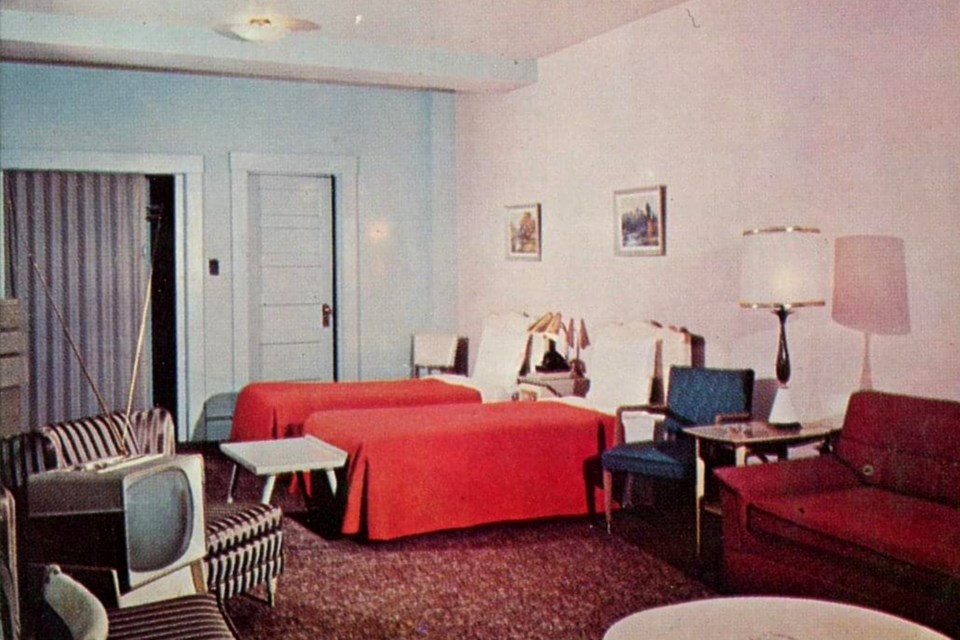
The Nickel Range (like many places of employment in 20th century cosmopolitan Sudbury) was a bastion of diversity among its employment rolls.
As Ann Sokolowski wrote, “When we came to Canada in '51, the first job my mother had was at the Nickel Range as a cleaning lady. It was tough back then for my parents, but they were glad to get a job since they spoke little English.” (Her father worked in the mines)
And, speaking of employment, reader Erik Allan Frantila remembers a story told to him when he was visiting family in Finland. He writes, “My dad's cousin told me how he was dropped off at this hotel. He was told that someone coming in would speak Finnish and offer him work.”
Alex Trebek shared in his memoirs that his father (who spoke multiple Eastern European languages) would often be brought around the corner to the police station (located at that time on the current site of Christ the King Centre) to help out as required.
As he wrote , “They were arresting so many Eastern European mine workers, and nobody at the police station could speak Polish or Ukrainian or Russian, so they'd drag Dad — who spoke them all — out of the kitchen and over to the police station to translate so they could file proper papers on whoever it was they had arrested.” (Source: Alex Trebek “The Answer Is...: Reflections on My Life” (2020)
A few of our readers wrote in about their experiences within the walls of the Nickel Range from their youth.
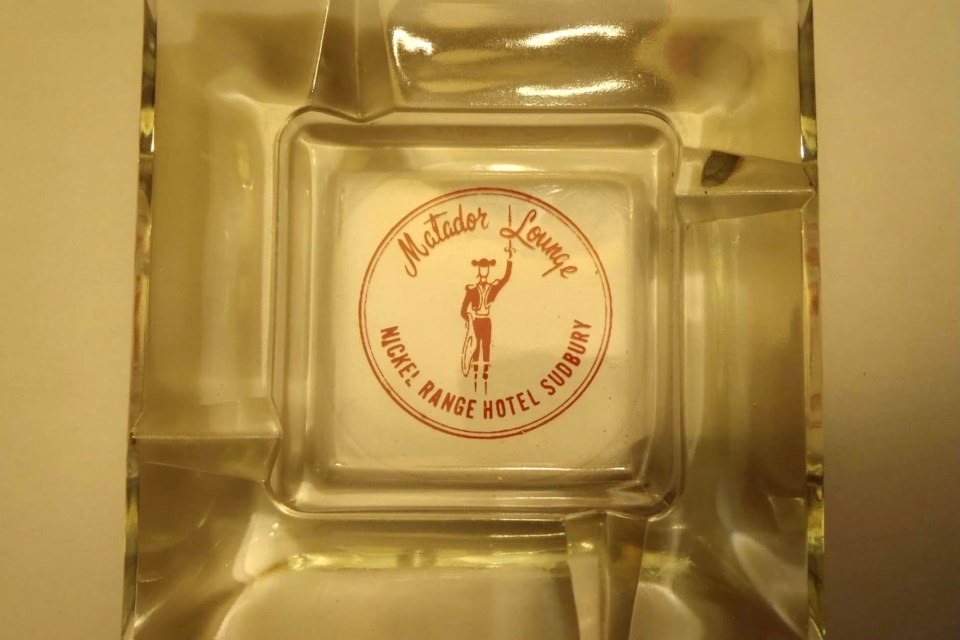
Mike Derks remembers “every other Saturday at 7:45 a.m. my dad would have three coffees and a milk for me as we were first in the chair for Harry and Gene to cut our hair — Harry and dad were both from Holland and got to speak Dutch — Gene and I preferred our English.”
At the opposite end of the spectrum, Carl Gustafson “performed with a dozen different bands in the ‘Strange Range’ … it was a place where a young man in a band learned about life … quickly.”
Reader Chris Hannah’s father was a part-time bouncer at the Range and he “remember(s) being brought to Sarge's pool hall (behind the hotel) and being told to play pool and not tell Mom, while Dad would go into the hotel.” As he continued, “if half of what (my Dad) told me was true, she was quite a place.”
Kelly Stutt had his first beer in a hotel at the Nickel Range. As he tells the story, “It was 1971, (and) they had just reduced the drinking age in Ontario from 21 to the age of 18. It was such a large drop (that) the bartenders were serving minors in confusion of what an 18-year-old looked like. Lucky for my buddies and myself who were only 16 … I was 110 lbs soaking wet looking barely the 16 that I just turned. Beautiful looking place as I remember. Even nicer after a couple of 25-cent drafts.”
While at the hotel bar, reader Larry Savel had an unexpected run-in with a scholastic authority figure. As he tells it, “After a long day in high school at Sheridan Technical School (1960s), I dropped in the Nickel Range for a cool one. Well, I met my geography teacher in the bar, guess he had a long day also.”
Carol Jersey remembers sneaking into the hotel with a group of friends, “around 1970, someone rented a room and about five of us went up the fire escape to the room. I do remember the room itself was not nice at all — very small, rundown, heating ducts were actually in the room on the ceiling.”
Unbeknownst to me, I discovered (through the memories of a couple of readers) that the Nickel Range also offered long-term rentals for families. Reader Linda Govier wrote that “we lived there for one month in a suite … there was nothing to rent … in 1970.”
While another reader, Shirley Dequanne, recalls that “as a child my parents and I resided in the middle floor of the annex (in one of the three “luxurious” suite apartments) in the Nickel Range … in the early 50’s.” What she remembers most about that time was “the elevator operator and Cecutti’s Bakery next door (chocolate éclairs & milles feuilles) … our first floor neighbour, Max Silverman, the Sudbury Wolves hockey coach … and the Rouleau family who owned and operated the Nickel Range.” Then, in 1966, she returned and “had my wedding reception in the ballroom.”
Many readers, in their response to the previous article, decried the decision made by the city council of the day to destroy this landmark of the downtown that contained such a rich history within its walls. Many of those comments echoed the remarks of Shirley Dequanne who wrote, “It would have been wonderful if this landmark had been restored.”
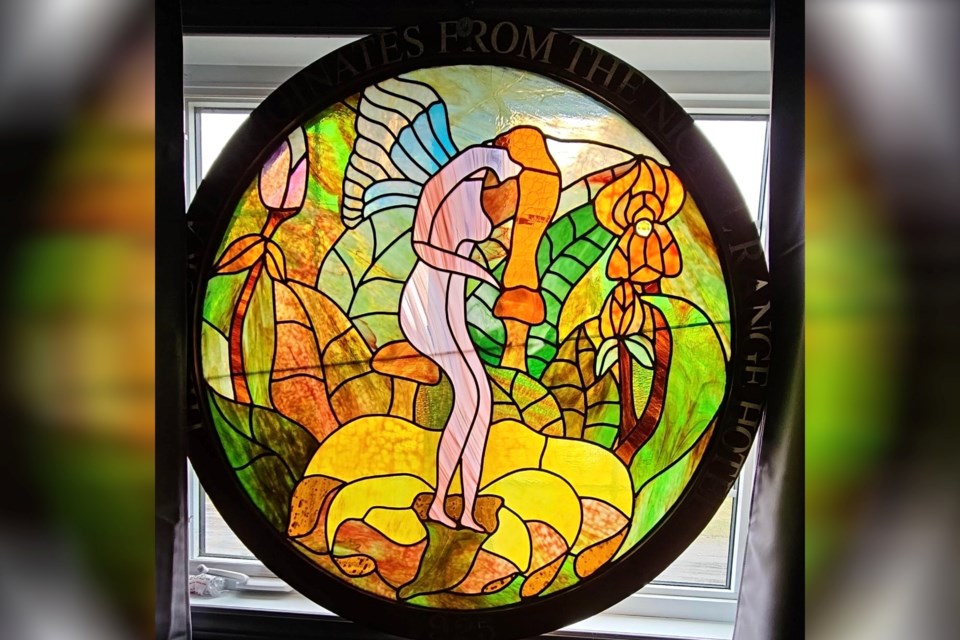
After the city took over ownership of the Nickel Range, Northern Life newspaper criticized the decision in a very tongue-in-cheek way. They proceeded to “assign” a job within the venerable establishment to every member of council.
“At the in-camera meeting, it was decided that Ward 7 alderman Ricardo de la Riva, with his long-standing experience on the local tree planting committee, would head up the potted plant activities at the old hostel. …
“The ward 4 alderman, Dick DeStefano, was asked to conduct encounter groups for the staff, with a minor responsibility for hygiene and health care delivery on the main floor. … After three hours of debate, Jim Gordon from ward 2, wanted to know if Councillors were being paid overtime.”
When the Nickel Range fell to the wreckers in the summer of 1975, and the remaining pieces were sold off, many locals took advantage of the low prices and came out to purchase pieces of the old hotel to use in their own homes.
Dave Bryan remembers, “As a young farm boy, my step dad bought a crapload of those bricks (and) spent weeks on that site chipping mortar off the damn things to rebrick our Chelmsford farm house.”
Well dear readers, last call at the Matador Lounge has come and gone and it’s time to head home. Thank you for sharing with us the whole range (get it?) of your memories. See you here again in two weeks for another trip back through time.
Jason Marcon is a writer and history enthusiast in Greater Sudbury. He runs the Coniston Historical Group and the Sudbury Then and Now Facebook page. Memory Lane is made possible by our Community Leaders Program.
